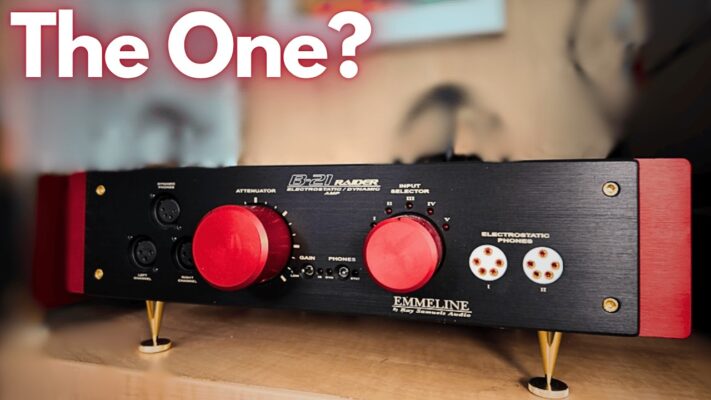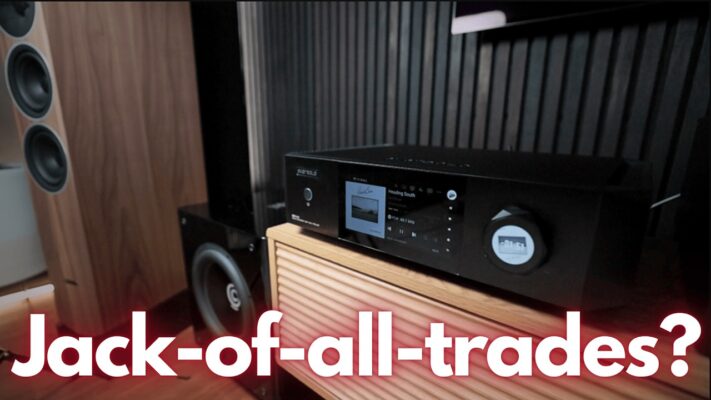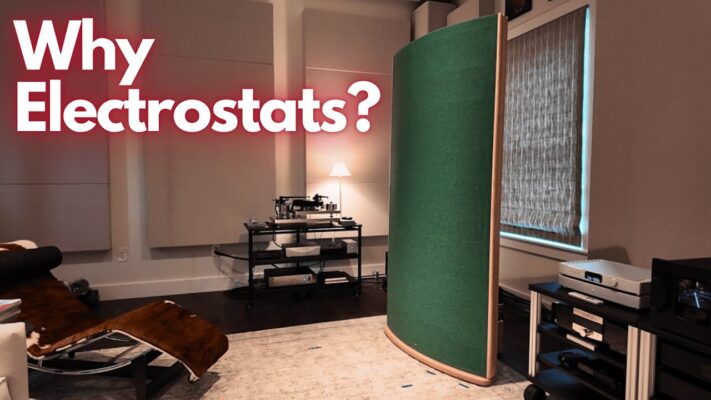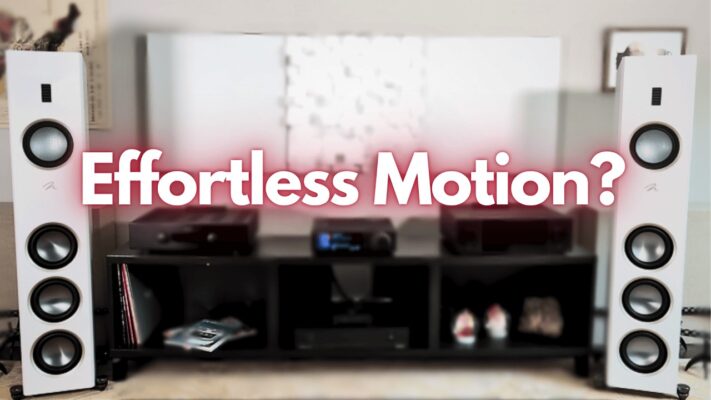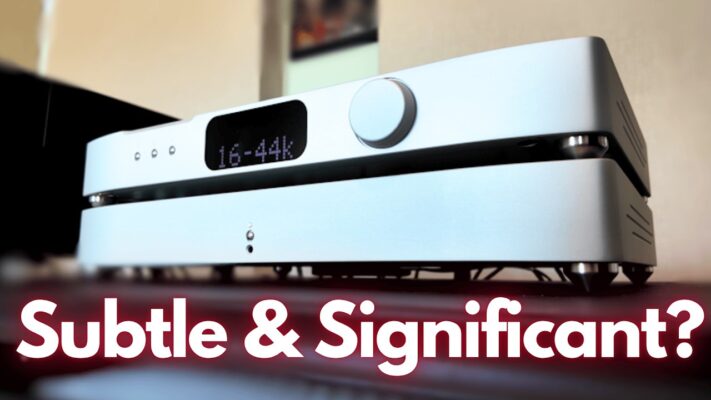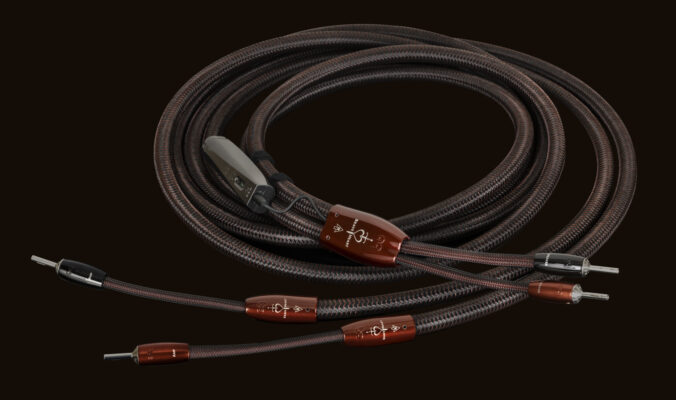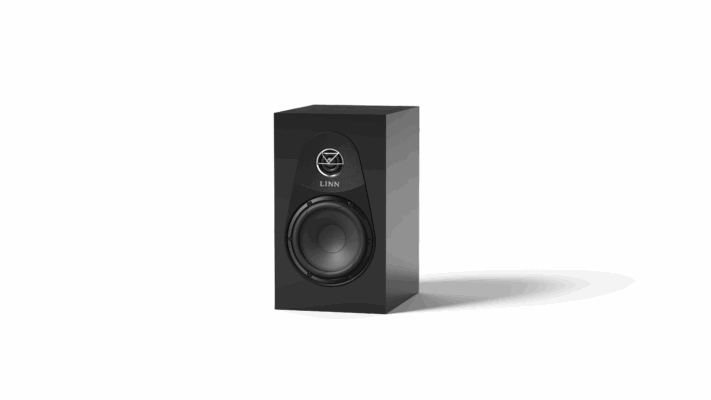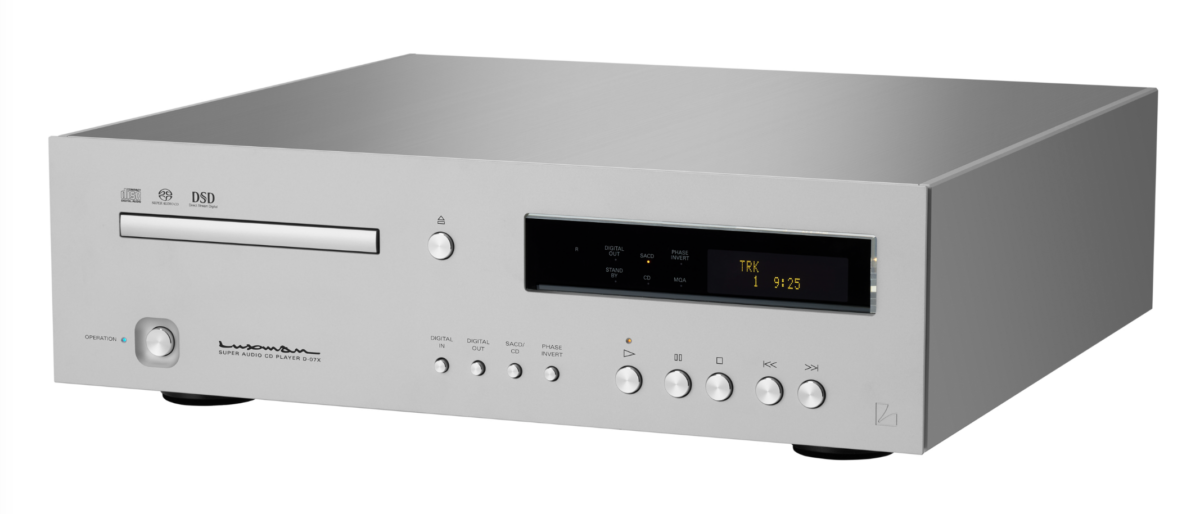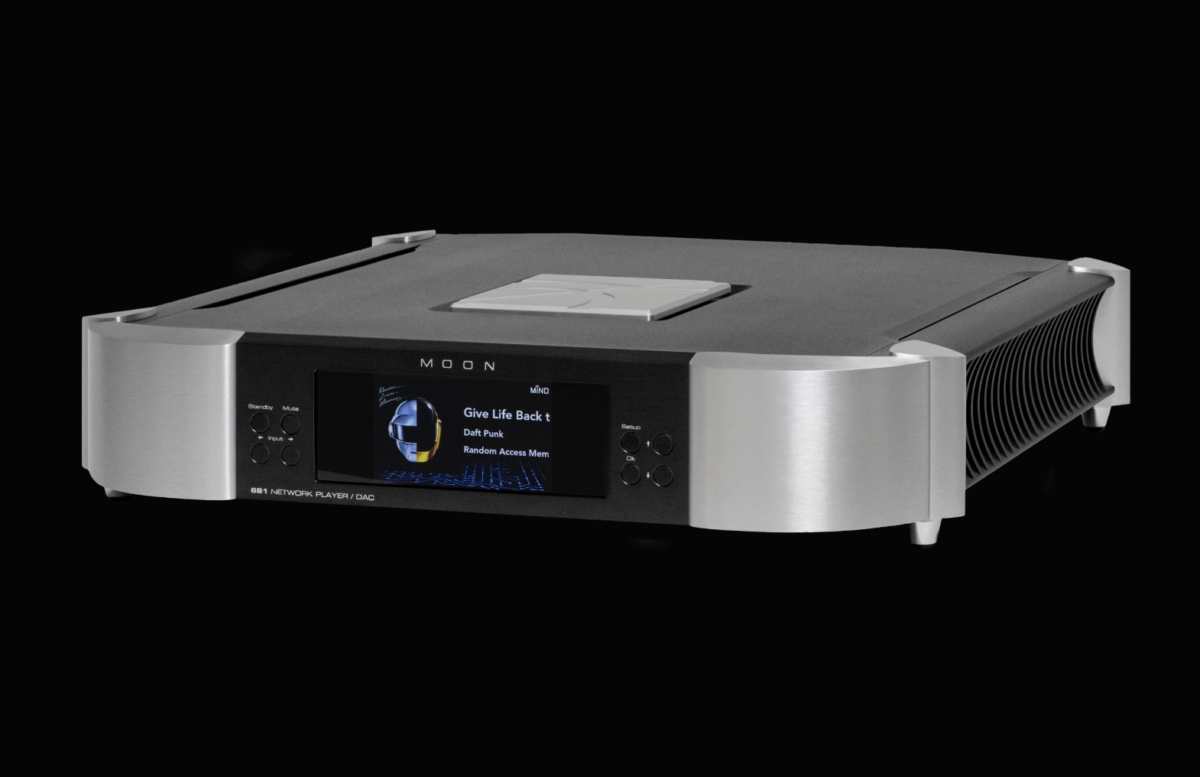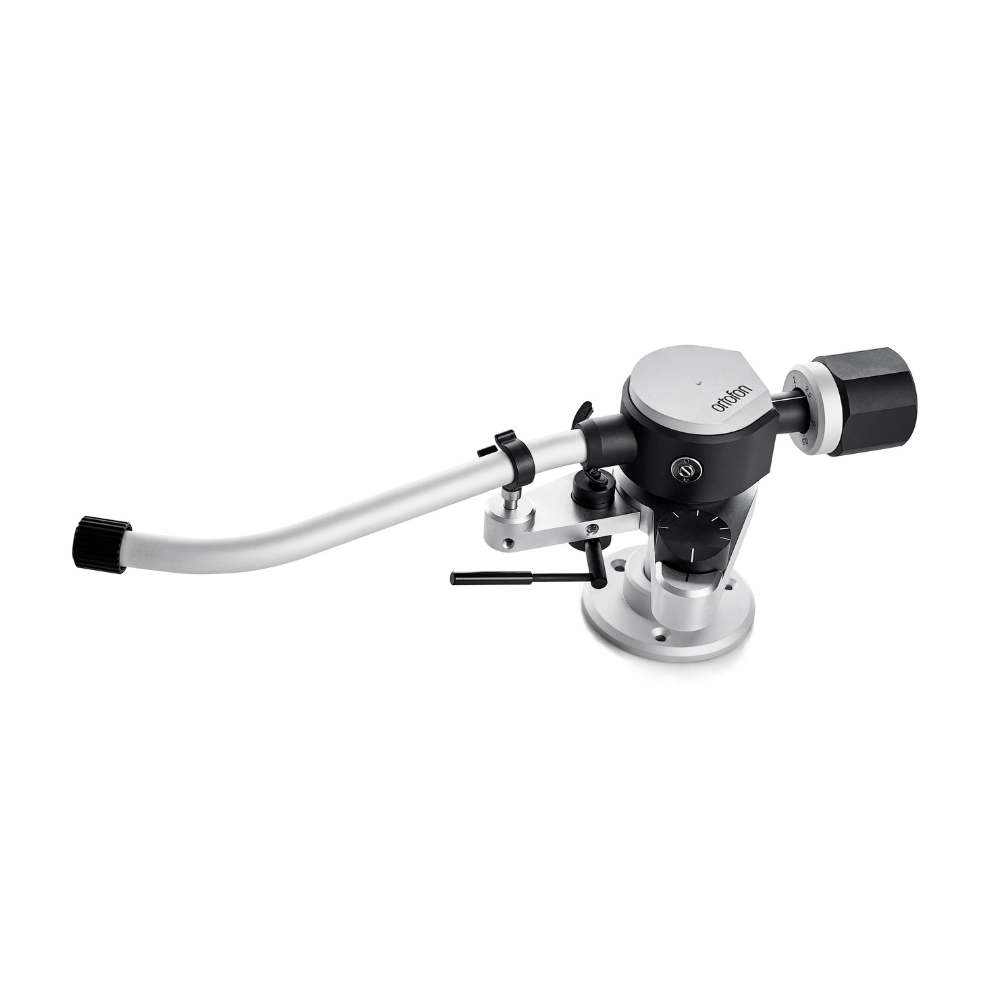
Everywhere renowned for its phono pickups, Orto- fon has since the mid-2000s also marketed a series of tonearms badge-engineered by the Japanese firm Jelco, a relationship that ended in 2020 when Jelco closed its doors owing to the pandemic and an aging workforce. I do not use the term “badge-engineered” disparagingly. Formed in 1920 by Y. Ichikawa, the Jelco Ichikawa Jewel Company specialized in jeweled bearings for watches; in 1958, it began making diamond styli for phono pickups; in 1977, Ichikawa himself secured a patent for a tonearm bearing (called “One Point Cross Suspension System”); and for several decades now, the company has been designing and selling arms both under its own name and as the OEM (original equipment manufacturer) for a number of other companies in addition to Ortofon, including AudioQuest, Sumiko, Koetsu, Oracle, Linn, Ariston, Roksan, Revolver, Mission, and Graham.
My first experience with Jelco arms was some four decades ago when I sold high-end audio gear to finance my transition from university teaching to film editing. Sumiko’s MMT, FT-3, and FT-4 arms, built to David Fletcher’s specifications as value-driven alternatives to his flagship The Arm, were excellent products. Although manufactured to an affordable price (in 1982 the MMT sold for $225, equivalent to about $700 today), no apologies for their audio performance were necessary, any of them well able to handle the best pickups at the time and almost certainly able to do so now. They mated synergistically with Sota Sapphire, Star, and Cosmos turntables, also Fletcher designs, a combination more than a few of my former customers enjoy to this day. Jelco is fully worthy of the respect it earned among discriminating audiophiles the world over.
Product Description
When it came to replacing the TA-110 and TA-210, Ortofon decided to take a more proactive role, redesigning them completely from the ground up, with a Japanese manufacturer specializing in high-precision machining for medical devices, and exerting total control over the entire process, beginning with nomenclature: AS-212R and AS-309R, 9″ and 12″ respectively. The numbers are counterintuitive until you realize they refer to pivot-to-stylus length in millimeters. In fact, 232mm, or 9.14″ rounded off, is the actual effective length of the AS-212R, but Ortofon of America’s Louis Dorio informs me that as the original AS-212 arms from the early 1970s had this model number, it is retained in the interests of continuity “despite being pretty different.”
Handsome in its silver matte-finish-aluminum S-shaped arm tube and black accents on the counterweights and knurled ring for the universal (i.e., SME-type) headshell, the 212R is in the best sense of the term “Old School” or, if you prefer, “classic” in style, appearance, and function. You get the impression Ortofon wanted to strip the design of anything extraneous or merely feature-mongering in favor of just the essentials necessary to allow the pickup to do its job with as few impediments as possible. Price also factored into this, I assume and also applaud, as the designers have clearly put the money into engineering and build rather than features as such.
The bearing is captive gimbal, and care has been taken with damping and materials to minimize or eliminate vibrations and resonances. The arm is supplied with two counterweights, one for very heavy pickups such as Ortofon’s SPU vintage models, which come already captive in a big headshell, a lighter one for most other pickups. Balance is static, which means you set the counterweight so the arm is level, align the “0” on the calibrated ring to the indicator line on the shaft, then dial the counterweight and the ring together to the desired tracking force. This is pretty accurate, but I still prefer to use an external stylus-weight gauge.
Anti-skating is available via a horizontal dial on the platform, each division corresponding to half a gram of tracking weight. Though Ortofon recommends using its own test record to set it, I prefer using the Wally Tools WallySkater, then trimming it in further by ear if necessary. I do this with music records from my collection because, according to Wally Tools’ J. R. Boisclair, the anti-skating tracks on test records “are cut at way too high an amplitude to be useful, and in fact can be harmful to playback quality and to the long-term condition of your cantilever pivot wire and cartridge damper.” Several pickup designers I’ve queried on the subject seem to concur.
Ortofon supplies an accurate template that makes drilling the armboard as easy as it could possibly be. Granting that I know how to use a drill, I had no trouble drilling one of the spare armboards for my restored Garrard 301 turntable. Using the supplied gauge took me fewer than 15 minutes to mark drill points, drill holes, and install the arm base. By the way, if you have your dealer do it or use one provided by your turntable manufacturer, I’d check their work with Ortofon’s template because Ortofon’s is the only way you can guarantee that any of the company’s classic SPUs will have the correct overhang and Baerwald alignment.
Arm height is adjustable via a pair of Allen grub screws in the arm base. A very impressive, audiophile-grade, 1.5-meter, standard 5-pin DIN-to-RCA cable is supplied (an L-shaped connection for low-profile bases and a balanced alternative are available as options for additional money). One thing more: Three cheers to Ortofon for providing a divot on the bearing housing to eliminate guesswork for those of us who use protractors like the Dennesen, Pro-Ject, or others that require locating the exact pivot point. Would that all arm designers were so considerate.
The only thing that may strike you as odd from the publicity photographs is the absence of a headshell. This is because Oroton doesn’t supply one! Its reason is that this new arm is designed to accommodate as wide a range of phono pickups as possible, from low-mass, high-compliance moving-magnets to high-mass, low-compliance moving-coils like Ortofon’s own SPU series or Denon’s 103. According to Dorio, “including a headshell would only have a 50% chance of being the correct mass relative to the cartridge that would be chosen.”
With an effective mass of just seven grams, the AS-212R is one of the relatively rare contemporary arms capable of optimally handling high-compliance pickups like my vintage Shure V15-V xMR (more later on this) and both vintage and contemporary moving coils. But care must be taken in the selection of a headshell. For my Shure, I use one that weighs around 6–8 grams (SME’s, Rek-O-Kut, certain Technics, and even one of Ortofon’s). For the others, I use suitable ones by Ortofon, Luxman, DS Audio, and a few from esoteric sources. As there is no azimuth adjustment on the 212R, it must come from the headshell, which some have but most don’t. Aware that many audiophiles now use moving coils, Dorio tells me that Ortofon of America is offering the company’s own excellent LH-4000 headshell, priced at $109. Weighing in at 14 grams, and featuring azimuth adjustment, this is very well-made and suitable for use with the majority of moderate-to-low-compliance moving coils at every price point in today’s market. LP Gear also seems to have a good supply of one made for them by Jelco ($84), with which I’ve had excellent results (it too has azimuth adjustment).
Sound
The AS-212R is so straightforward in concept, design, and execution that I went through practically my whole collection of moving-magnet and moving-coil pickups, including DS Audio, vintage and contemporary Denons, Ortofons, Hanas, Shure, Clearaudio, Grado, and Nagaoka. All pickups were installed and set up according to their manufacturers’ recommended overhang, offset, and tracking weight (I typically begin at the middle of the recommended range and move up from there if necessary). All were checked to ensure the arm/pickup resonances fall within the desired 8–12Hz range using the HI-FI News & Record Review HFN 001 and the Shure Audio Obstacle Course test records. If you are after the best bass response of which your vinyl setup is capable, it is imperative the arm/pickup resonance falls in this range, the only way to ensure which is with a test record such as these two. The Shure and its earlier iterations are out of print but readily available at second-hand sources such as Discogs, while a newer version of the HI-FI News record is available from Elusive Disc.
It would be tedious to go into granular detail about how the 212R handled each and every one of these pickups. I have used most of them for a good while, and I know how they perform in a variety of arm/table setups. In the AS-212R, there were no surprises, which did not, in turn, surprise me. Without minimizing the importance of arms and tables, once they reach a certain level of excellence, the phono cartridge itself is in my experience the principal determinant of the overall sound, particularly in the sphere of tonal balance, assuming there are no obvious mismatches as regards mass, compliance, damping, rigidity, and so forth.
I’m writing up this review having just finished putting DS Audio’s superb E3 optical pickup and equalizer through their paces for my colleague Michael Fremer’s Tracking Angle. For much of my listening, I used SME’s updating of its classic 3012 arm, now designated the M2-R12, with gimbal bearings replacing the previous versions’ knife-edged ones. This combination, also mounted on my restored Garrard 301, yielded outstanding transparency, not to mention equally outstanding clarity, imaging, soundstaging, and dynamic range, with anything I threw at and against anything to which I compared it.
Transferring the E3 to the AS-212, I played Leonard Bernstein’s now classic DG recording of Stravinsky’s Les Noces (The Wedding), which has been in pretty serious rotation chez moi ever since I picked up a mint copy from Discogs a while ago. Dating from the beginning of the composer’s neo-classical period, this is a cantata about a Russian folk wedding with a score that calls for four virtuoso pianists (Bernstein’s stellar quartet is headlined by Martha Argerich and Krystian Zimmerman), a panoply of percussion, and four soloists and chorus. The piece, which begins as if in medias res and never relents over its 20–24-minute length, has to be one of the most difficult of all music to record: four pianos are spread across the soundstage, the soloists in front of them, the chorus behind, the percussion distributed at various points throughout. The result could so easily be confused and cacophonous, but the combination of the E3 and the 212R gave up nothing to the SME. I was especially impressed that whenever the non-pitched percussion, like ancient cymbals, chimes, and snares, are struck, which in this score is almost always very loud, they don’t momentarily obliterate the rest of the orchestra. In other words, the AS212 allowed the E3 to strut its stuff without impairing its remarkable imperturbability.
I next substituted my trusty Shure V15-VxMR with Jico SAS boron-stylus combination (Google “Seydor Shure TAS” for my review), a very different-sounding component, and was rewarded with reproduction of quite uncommon smoothness and neutrality. The sound isn’t quite so transparent as the E3’s—few in my experience are—but it is more natural, while giving up little in terms of dynamic range, detail, imaging, and soundstaging, areas in which the DS scores very high indeed. As regards soundstaging, the Shure remains one of the finest pickups in my experience, throwing a wide and continuous space across the front of my room, with outstanding resolution of the singers and instruments within the space, easily the equal to the DS or any number of moving coils. Another area in which the Shure has always excelled is outstanding bass response, where it trumps the E3 (and many other pickups), not least because it lacks the DS’s built-in boost at the extreme bottom. The Shure is equally as vital and involving as the D3 but in a different way. A pithy comparison might be that the D3 forces you to listen while the Shure persuades you to listen. If long intensive listening sessions stretching to several hours are part of your regular entertainment, the AS-212/Shure combination is pretty much unbeatable.
Next, I hooked up a Grado Statement Series Reference 2. This model is no longer in the Grado line, but it exhibits the distinctive tonal character for which Grados are known and loved by their fans: a rich, weighty, even dark chocolaty overall tonal balance that favors the midrange on down and that results in an impression of body, dimensionality, and solidity that very few other pickups in my experience can quite match. There’s not a hint of top-end brightness; yet, as with the Shure, you feel you’re missing nothing (not least because so many pickups, notably moving coils, have rising top ends). As noted, Les Noces abounds in percussion, but with the Grado there is no hint of the transient enhancement you sometimes hear with rising top ends: the entire complement of percussion sounds completely un-hyped and true.
I always play the great Sinatra/Billy May collaboration Come Swing with Me (Capitol) when I review record-playing components because this early stereo recording is extremely hot and very bright on most equipment. Try the muted trumpets on “Sentimental Journey,” which are sharp and piercing with many mc’s and also the DS Audio; with the Grado and the Shure, the edge is removed in favor of what sounds to me like a more truthful reproduction of the instruments. Keep in mind, however, that given how the album is recorded, that might not be strictly speaking accurate, but in this case give me beauty over truth any day. Yes, the Grado is less neutral than the Shure on voices, e.g., cue down Impex’s fantastic new 1-Step of Sing and Dance with Frank Sinatra, and you will hear Sinatra’s voice darken just a tad more than it actually sounded when this album was recorded in 1950. But I happily confess that the sheer deliciousness of the Grado’s box of chocolates is a temptation difficult to resist. I should add that Come Swing with Me has sensationally thrilling sonics, fabulous dynamic range, and irresistible rhythmic impetus and drive. Every one of these pickups in the AS-212 reveals it that way, consistent with its own tonal character.
Of course, I mounted Ortofon’s Synergy G SPU, an elliptical stylus version of this vintage mc in its captive headshell, and the results I got tally to a T what I reported in my review of this pickup a few issues back: like the Grado, a very rich and weighty midrange, lower midrange, and bottom end, a little Gundry-like dip throughout the presence region, and a bit of a rise way up high. It would be nice to say that it formed a special synergy with the AS-212, but none that I could tell, at least as referenced to my SME M2-12R or the arms integral to Luxman’s PD-151A (Jelco gimbal version) and PD-191A (SAEC knife-edged). This, by the way, I consider in the AS-212’s favor. As I noted when I reviewed it, the Synergy G has a sound all its own that accounts for the cult status of all Ortofon SPUs mounted in their proprietary headshells. I happen to like this sound a lot: lively, involving, dimensional, a little pushed back in the presence region (not a bad thing given how closely miked many recordings are), and some silver way up high that nips the ear pleasingly in jazz and a lot of modern classical music that avails itself of percussion (Stravinsky, Bartók, Varèse, Boulez, Bernstein).
Throughout the entire evaluation period, I heard nothing that suggests the AS-212 imparts any tonal characteristic of its own to the sounds of these phono pickups. Yet at the same time, in no way does it impede, hamstring, or otherwise prevent each of them from performing and sounding as they were designed to. Finally, with all the pickups I used throughout the entire evaluation period, I was continually struck by how clean the reproduction is with the AS-212, how truly quiet as regards groove and tracing noise and all the other detritus that stresses lesser arms and pickups, and how confident and controlled the presentation.
Headshells: “You opened the door, counsellor”
One of my favorite television shows is Law & Order, where every now and then an attorney will ask a question that leads in a direction which gives the opposing attorney an advantage. When an objection is raised, the judge invariably says, “You opened the door, counsellor.” Well, as much I’ve come these last few years to enjoying listening to a wide variety of pickups, my idea of a good time does not extend to comparing headshells. But, dammit, you opened the door, Ortofon. Here’s the thing: When you’re dealing with vinyl, everything makes a difference, if only subtly. And this is as true for headshells as for wiring, cables, materials, not to mention cantilevers, styli, cartridge bodies, and so forth.
At one point in my listening, I transferred my Denon 103, one of my favorite cartridges, from the SME to the Ortofon, and I heard what sounded to me like less detail and definition in the bass. In the SME, the Denon’s bass is well delineated, in the Ortofon a bit less so, albeit still very strong but a little generalized. On a hunch, I wondered if the headshell was responsible for some of this. The Denon was installed in a Yamamoto Acoustic Craft HS-1AS Africa Ebony wood headshell (price varies depending on source—on eBay, I’ve found it as low as $78 and as high as $141). So, I transferred the Denon to DS Audio’s HS-001 solid-steel headshell ($450). Sure enough, bass tightened up, became better defined, yet with virtually no sacrifice in strength and power. This is the kind of thing that delights some audiophiles and maddens others. But it’s a fact of life, and a really stubborn, obstreperous fact of life for the vinyl enthusiast. (Such is the world of high-end audio these days that the HS-001 retails for a hundred dollars more than the pickup itself!)
A non-audiophile friend of mine asks me all the time, “How do you know what’s correct?” Well, the truth is, a lot of the time you don’t, you just go with what sounds nice to you. With enough experience you can generally tell if this pickup or that turntable is imparting a sound of its own to everything you play. And since all recordings are different, which pickup you prefer, or headshell/pickup/arm combination, is likely to change with source material and associated components. One of the reasons in the first place that I put the SME 2M-12R on the Garrard 301 I purchased two years ago is precisely because it’s a product of known characteristics and performance, and it has a universal headshell that lets me swap pickups with ease. Of course, you can do this with non-detachable headshells, but it takes longer, is much less convenient, and is a whole helluva lot less fun, turning a pleasurable activity into painstaking work.
When it comes to recommending headshells, I haven’t gone through enough of them to be of much help; and even if I had, generalization would be difficult owing to the differences in arms and pickups. Suffice it to say that I’ve used with great success headshells that cost as little as $19 and as much as $450 (the most expensive one I know costs $800), and the success depends basically on the pickups and arms they’re matched with. I personally wouldn’t be inclined to put my Shure/Jico into a DS Audio headshell because the latter has too much mass for the former’s high compliance. By the same token, my Denon 103 is a wonderful match with the DS Audio or the beefier of the two headshells Thorens offers for its TD 124 DD turntable.
Unfortunately, even if you have all the technical data (like materials, mass of shell and arm, and mass and compliance of pickup ), I know of no way you can predict what a given headshell/pickup combination will sound like on the basis of the data alone. You must listen. If you’re tempted by some of the pricier alternatives, I’d try to make sure you can buy them on approval.
Something else: For decades now, arm designers have been fixated upon the link itself, the connection, between the universal headshell and the arm tube. More recently, a number of manufacturers have discarded the thin rubber gasket that goes between the bayonet end of the headshell and the arm itself. The idea here is to make for a more rigid connection between the headshell and the arm tube. So far, so good. But again, this is something that proves difficult to generalize about. Sometimes removing this gasket makes the sound less good, because the damping/absorptive factor of the gasket helps reduce or eliminate certain kinds of resonances. At other times, the sound becomes more detailed and defined, no doubt owing in part to how the materials of the headshell and arm tube couple (remember that all connections of dissimilar materials act like a filter). By all means experiment, but don’t be surprised if your preferences go against the putative wisdom of some guru or other.
Conclusion
Before I began this review, I wasn’t aware there were so many separate tonearms still available. These last 30 years or so it’s seemed to me that the market had gone over to integrated setups, whereby you buy an arm and table from the same manufacturer. In many respects, this is a good idea, especially where drilling armboards or plinths and bases is required. A quick check online led me to more than 15 arms priced under $3400, all from reputable audio manufacturers, and this is doubtless a small fraction of the actual number. Some of them have fixed headshells, many of them have removable headshells, several among those with proprietary headshells, fittable only on the arm they are supplied with. Obviously, this puts me in no position to offer comparative shopping advice. One reason I wanted to review this Ortofon is precisely because the headshell is universal and the arm is low enough in mass to handle higher-compliance moving magnets like my Shure.
So, let me say this by way of summary: Ortofon’s AS-212 is a superbly designed, engineered, and built tonearm with performance easily comparable to arms costing several times its $3359 retail. It is easy to install; sets up straightforwardly and stays in adjustment until you change it; and it has all the features you need to extract the best from your phono cartridge, assuming you buy a headshell with azimuth adjustment. Its design is such that it will readily accommodate a wider variety of phono pickups than any other known to me except (or in addition to) those arms, like the Mørch or the Graham, that allow swappable arm tubes. It enabled all the pickups I own to perform at what in my experience is their best.
I find no flaw in its conception or design. By this I don’t mean to suggest it’s perfect—as we all know, nothing is. But it does what it was designed to do at an exceptionally high level of performance and at a very reasonable price. If I were in the market for an arm capable of all these things and more, it is the one I would buy. I recommend it without serious reservation.
Specs & Pricing
Cartridge weight: 18 to 26g./26 to 38g. (standard weight, including headshell/heavy weight, including headshell)
Length: 9.14 inches or 232mm
Effective mass: 7 grams
Price: $3359
ORTOFON INC. U.S. SUBSIDIARY
500 Executive Blvd
Suite 102
Ossining, NY 10562P
(914) 762-8646











